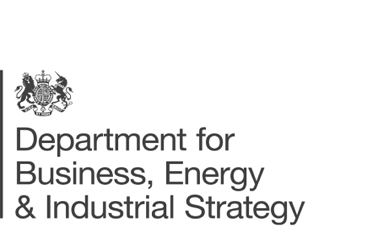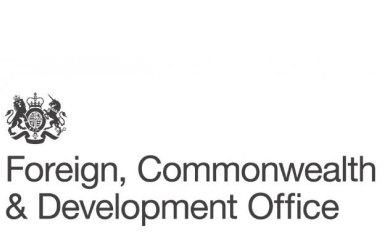This document compiles the experience of promoting BIM, and the design and implementation of national plans, related to the methodology by the member countries of the BIM Network of Latin American Governments. The strategies and actions that public institutions in the region applied according to the BIM Initiatives of each country are identified. The intention is that this document is a point of reference for the implementation and promotion of BIM by the State, from a Latin American perspective built on the basis of the local realities of each of the countries that make up the Network. With this document , we hope to encourage the creation of support networks for the transfer of knowledge, experiences and lessons learned.
This report presents the results of a first regional survey of companies in the construction sector in Latin America and the Caribbean to better understand the slow adoption of Building Information Modeling (BIM), a new collaborative work methodology based on data models that contributes enormously to improving the productivity of the sector.
https://publications.iadb.org/es/encuesta-bim-america-latina-y-el-caribe-2020*
As the construction industry continues to evolve and increasingly embraces digitisation, an early-stage project deliverable for Build Digital was to conduct a horizon scan of the opportunities available for those within the construction sector. A primary aim, therefore, is to provide a comprehensive inventory of educational and training provisions that exist within Ireland at present. The resulting inventory focuses on key educational sectors, including Universities, Educational Training Boards (ETBS), Colleges of Further Education, Professional bodies, and similar organisations. There are in excess of 300 entries on the inventory.
https://www.builddigitalproject.ie/education-training-inventory
This inventory was developed as a tool for identifying relevant standards and, in particular, their relevance to Build Digital. Each document found in this research was recorded, reviewed, and graded based on the scoring system created for this report and tool. This tool is intended to be flexible should new standards be published, or a change is required to an existing standard. There are in excess of 120 entries on the inventory.
https://www.builddigitalproject.ie/bim-standards-and-supports-inventory
The report presents recommendations for Build Digital with respect to information management and the use of BIM as a critical vehicle of innovation to unlock improved project outcomes in construction. The focus on addressing the information challenge is evident in the UK government’s publication of nternational information management standards in 2018 and the recent introduction of an information management mandate.
https://www.builddigitalproject.ie/international-information-management-review
A colloquium is a conference where high-level discussions take place between experts in relation to a topic of importance. The event typically has a questions and answers period and is followed by the compilation of a document which details the discussions that took place. Chatham House Rules apply, meaning any discussions, other than formal presentations, will not be attributed to the contributor. The purpose of the Build Digital Industry Colloquium is to better align the project with the needs of the industry and to identify the benefits expected for the industry from the future work of the project. To ensure a diverse representation, Build Digital approached the Construction Industry Council (CIC) to invite participants from CIC representative bodies
https://www.builddigitalproject.ie/industry-colloquium-report
With the aim of understanding the degree of progress in the implementation of BIM in Latin America and the main actions that have been carried out, CAF—development bank of Latin America—promoted the development of a survey of information on this methodology. in the region. This survey includes a diagnosis of the progress of BIM implementation at the national level in different countries in Latin America and the Caribbean. It is important to highlight that this diagnosis presents the specific state of progress of the period of its development, between January and May 2022, so, at the time of reading, it may not coincide in some aspects with the current situation of the countries.
The Ministry of Communities and Territories is the Ukrainian government ministry responsible for public housing infrastructure development. The Ministry was established in 2005 as the Ministry of Construction, Architecture, Public Housing and Utilities. It also can be considered as a successor of the Ministry of Construction and Architecture that existed before 1994. In 2007-2010 the ministry was split into two: Ministry of Regional Development & Construction and Ministry of Public Housing and Utilities.
The purpose of adopting the order of the Cabinet of Ministers of Ukraine “On approval of the Concept of implementation of technologies of construction information modelling (VIM-technologies) in Ukraine and approval of the action plan for its implementation” is to determine the principles and mechanisms for implementing state policy on the introduction of construction information modeling technologies as a tool for further reform, modernization and digital transformation of the construction industry of Ukraine.
The draft act proposes the introduction of phased, gradual modernization and digital transformation of the construction industry of Ukraine through the introduction of construction information modeling with the simultaneous creation of appropriate conditions, including the implementation of regulatory and regulatory and regulatory regulation of the processes of implementation of projects for the construction and operation of buildings and structures.
The Finnish Transport Infrastructure Agency (Väylävirasto), shortened to FTIA, is a Finnish government agency responsible for the maintenance of Finland’s road, rail, and waterway systems. The agency’s parent organization is the Ministry of Transport and Communications. FTIA have an annual budget for their works in the region of 2.1 billion euros. The FTIA is composed of five divisions and two functional areas that report directly to the Director General. These divisions are: Operations Management, Transport Network Planning, Projects, Infrastructure Management, Infrastructure Access and Information. FTIA is a skilled procurement organisation whose mission is promoting the easy movement of people and the efficient transport of goods by the world of business. In the summer of 2019, FTIA committed to the a vision for standardizing the information management of the built environment: “Defined and regulated information flows comprehensively throughout the entire life cycle of the built environment. The starting point in FTIAÂ’s operations is that each project would be implemented in the best possible way based on information models and open information management standards. However, the quality of the data models has not been measured or monitored Operations are supported by interoperable information services and systems.
This publication is a compilation of a master’s thesis bringing together the most important issues for FTIA from the text, such as the starting points of the research, the findings and development proposals. The focus of the case study was on the data management process of data modeling and in particular data transfer. The results of the work have been the subject of a recommendation road map and proposals for action for 2021 and 2025. The starting point in FTIA’s implementation is that each project would be implemented in the best possible way, based on information models and open information management standards. However, the quality of the data models has not been measured or monitored Operations are supported by interoperable information services and systems. The following specific objectives were set for the study:
– to define the level of information modeling in the organization in general
– to create a tool with which the development can be monitored
– to define the basic principles guiding the activities
– proposals for the development of information and know-how related to information modeling in the fairway’s organization and processes
https://julkaisut.vayla.fi/pdf12/vj_2020-18_inframallinnuksen_toimintalinja_web.pdf
Following common international standards in information management would significantly improve the profitability of the real estate and construction sector. It could also increase cooperation among the different organisations. Through the RASTI project launched under the ‘KIRA-digi’ process the Ministry of the Environment is now building a strategy for the use of international standards. The aim of the RASTI project is to improve the efficiency of information management in Finland’s built environment by up to 50%. In the long term this would mean annual cost savings of about EUR 300 million. At the moment there are several international and local, partly overlapping standards relating to information management, and it is a challenge for operators in the real estate and construction sector to choose the most suitable ones.
The document presents a national vision for 2030 and a strategy which, if realised, will together make Finland one of the leading countries in the digitalisation of the built environment. The strategy document describes the steps (roadmap) for reaching the vision in 2030. In addition to commitment to the shared standards, the required measures include development tasks, education and training, support for the implementation, evaluation of the results and a management model for further development of digitalisation. The target state requires measures in both the private and the public sector. Cooperation between civil society organisations and organisations participating in standardisation is essential.
https://rastiprojekti.com/versio-1-0/
An archive version of this information article has been created if the original is no longer accessible (Archive information from January 2024)


